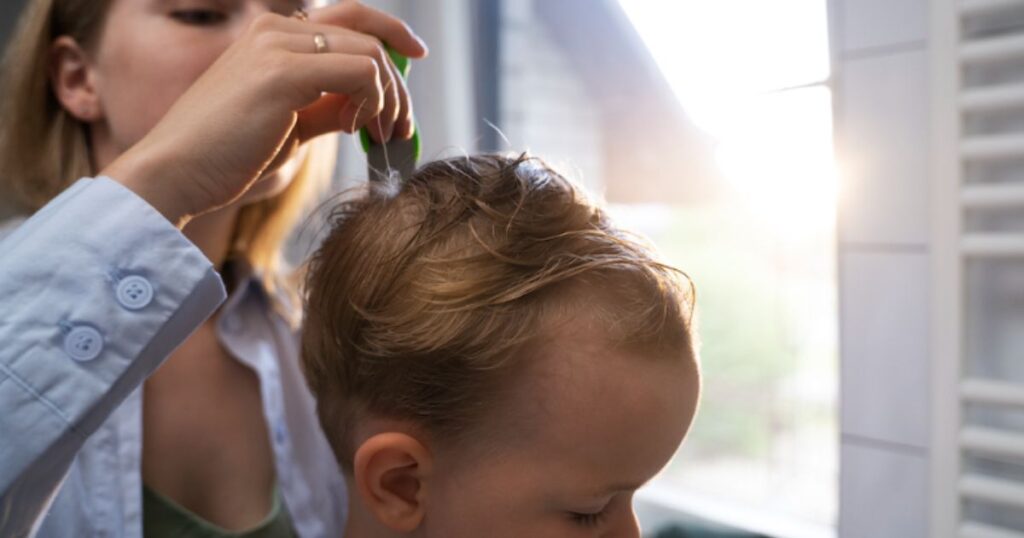Is Head Lice More Common In The Summer?

It’s summertime. That means children spend more time outdoors and around others than they normally would during the school year. Sun, sand, and afternoons full of playtime and fun are bound to be on the to-do list during this hot season. While you are preparing for an afternoon barbeque with your friends and family, the last thing you are going to want to worry about is your little one getting sick.
Not sick like an illness, because head lice do not spread disease, however, they can create an uncomfortable environment for the person they infected and those that live under the same roof. If you have never dealt with head lice before, then you might have a million questions concerning these pesky parasites.
Our FAQ page is a great starting point to answer many of those questions. But there are no worries. We’ll explain in detail everything you may not want to but need to know about head lice. Our staff is equipped with the knowledge and proper training to ensure that all clients receive the best care, both physically and mentally.
Can You Get Head Lice In The Summer?
Yes.
Although species-specific, head lice are not season-specific. Head lice tend to thrive in environments where the infected individual is in close proximity to others. Some might think that head lice cases spike during the school season, and not the summer. Therefore, they must be the most active during the fall-spring right?
Not necessarily. Think about it this way: the more people your children are around, the higher the chances are of them catching head lice. Relying on the seasons to determine the level of safety your little one has from the parasites isn’t encouraged. These tiny guys thrive all year round, as long as there’s a healthy scalp to feed on.
Summer Care Prevention Tips
Here are a few tips to keep in mind if your little one is participating in any fun activities that involve a large group of people this summer.
We all know it. Summer break exists for kids because for parents there is no such thing. That being said, the best way to prevent a head lice outbreak in a summer camp is to hold a pre-camp lice check. At best, have an on-call professional in the event an outbreak does occur. Always make sure to have clear and effective communication with caregivers, and inform them of ways they can prevent lice at home.
Sports are another area in which head lice can thrive, especially if children come into close contact with each other. While it is not common, it is not impossible so try your best to avoid sharing any sports gear that comes into direct contact with the head and scalp. Make sure to keep your hair tied up or in a protective style during the sporting event.
If there’s one thing kids are definitely going to want to do this summer, if they haven’t already, is go swimming. Now, it has long been misunderstood that chlorine can kill lice and their nits. This is just nowhere near true. The chemical levels aren’t high enough to kill them. Even so, adult head lice can hold their breath underwater for long periods of time so chlorine isn’t even a factor most of the time. Just like how we previously mentioned in sports, keep their hair up when they go to the pool and perform a comb-through once they have arrived home.
As you can see, the question shouldn’t be “Can you get head lice in the summer?” But rather, “What are the conditions that increase the risk of catching head lice?”
What To Look For If You Suspect Your Child Has Head Lice
To clarify: head lice are not exclusive to children. However, they are the demographic with the highest number of cases. Regardless, head lice can look the same across the board regardless of most physical attributes of the infected individual.
Firstly, they are often light in appearance but can be darker if the person has darker hair. An adult head louse is about the size of a sesame seed and has six legs in total. At the end of each, are hook-like claws that allow them to firmly grip and move around the hair shaft. Remember in the swimming section of this article we talked about how they can hold their breath underwater for long periods of time? Well, these hook-like claws are another physical characteristic that allows them to survive when submerged underwater.
A female head louse can lay about 6-10 nits, or eggs, a day, and all head lice have a complete life cycle of about 30 days. They can reside anywhere on the scalp but they do have four favorite hiding spots: the nape of the neck, behind the ears, the temples, and the crown of the head.
It takes about six to nine days for a nit to hatch into baby lice or nymphs. Nits are incredibly small, about the size of a single knot in a piece of thread. They are also light in color and are often mistaken for dandruff or water droplets on the scalp. Strategically placed about ¼ of an inch above the scalp, nits are not going to be removed by simply washing the hair or combing it with a traditional hair tool.
If you think you or someone you know has been exposed to head lice, the next step is to seek help from one of our clinicians at Lice Clinics Charlotte.
Lice Clinics Charlotte: One Treatment. That’s It.
So, are head lice more common in the summer? Hopefully, by now you know the answer is no.
We understand that head lice can be a difficult condition to treat, especially with all of the information readily available at our fingertips. That is why it is crucial to seek advice from a licensed professional at Lice Clinics Charlotte.
We pride ourselves on offering the best professional treatments so our clients only have to see us once, such as the Airtral Exclusive Treatment.
For more information on additional treatment services we provide, or to schedule an appointment, visit our website today!
